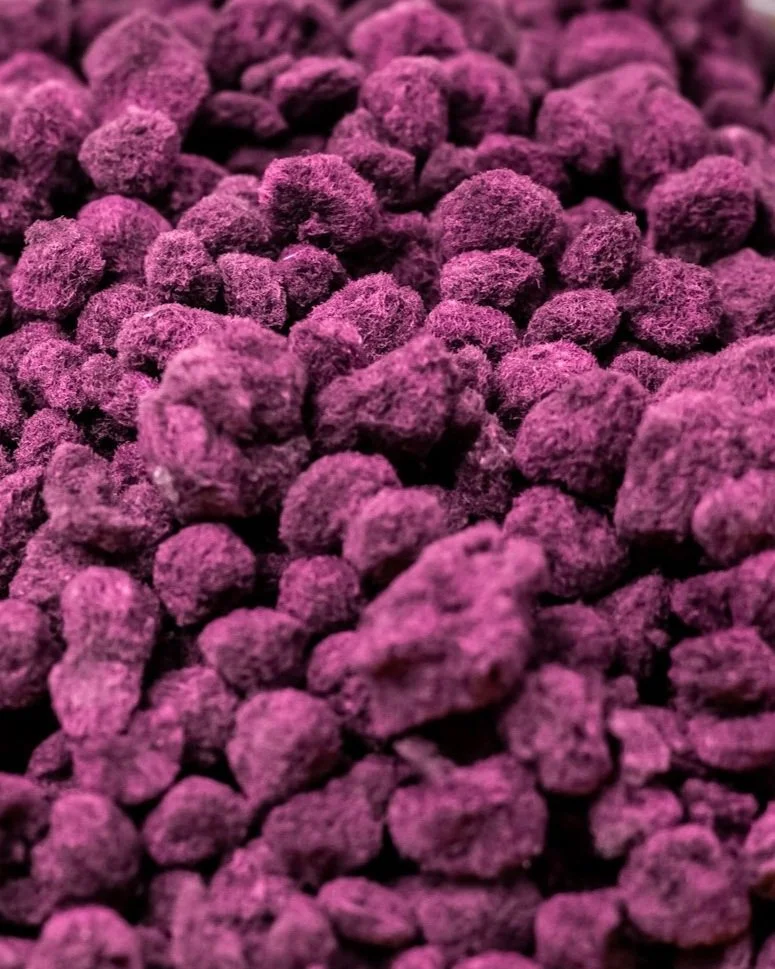
Meet our hero —
SeaGraze®
Made from the red seaweed Asparagopsis taxiformis, SeaGraze® is good for cows, great for farmers, and even better for the planet.
Breakthrough research has shown that adding just a sprinkle of this seaweed to livestock feed reduces livestock methane emissions by over 90%.
It sounds too good to be true, but it’s not. Asparagopsis taxiformis is the sustainable feed material of the future for the world’s millions of farmers and billions of farm animals. We’re scaling production of this mighty seaweed to bring you that future.
SeaGraze® is unique.
SeaGraze® is unique.
Enhanced palatability.
Our single-phenotype seadstock eliminates the need for any flavor-enhancing additives. No molasses needed.
High in metabolites, lower inclusion rate.
We’ve demonstrated 5x+ the methane reduction with the same amount of product inclusion as our competitors. Expect lower costs from us over time.
Proven return on investment
We’re so sure Symbrosia will make you a positive ROI, that we even have a gaurantee! Read more here.
Keep carbon revenues and data.
Our business model doesn’t rely on carbon credits, those revenues stay with the land stewards. Data ownership remains with the operation. Learn more here.
How it works
During the enteric fermentation part of the cow’s digestive process, SeaGraze® inhibits the formation of methane without impacting the overall digestion that helps the cow gain weight and produce milk.
In a typical fermentation process, the H2 and CO2 combine within the stomach to create an output of CH4 (methane) that is released whenever the cow burps. However, with SeaGraze®, the H2 is blocked from the C, reducing methanogens naturally through digestion.
How SeaGraz® is made
We grow our red seaweed using sun and seawater in Hawai’i.
We use a farming process known as aquaculture. Our growing technology involves zero fresh water and relies mostly on the sun to grow.

Founding Research
-
The United Nations has declared 2020-2030 the “decade of ecosystem restoration.” While seaweed has long been touted for its impressive array of restorative ecosystem services, only recently has research started to uncover algae’s potential within the food, animal feed, and biofuel sectors.
In 2014, Dr. Kinley at James Cook University and CSIRO profiled a number of native Australian seaweeds for their potential to reduce methane emissions when utilized as a feed additive for livestock. Asparagopsis taxiformis outperformed all others with 1-2% feed inclusion resulted in 99% reduction of methane in an in vitro model.
Continued research at UC Davis, Penn State, and CSIRO has shown that the methane reductions hold up in vivo and using the supplement does not have any adverse effects on animal health, milk, or meat.
Trials are showing that 0.1% inclusion in cattle’s daily diet could result in a sustained 80% methane reduction — a true sweet spot for the industry.
-
Harvesting this seaweed from the wild will result in massive ecological damage; there is simply not enough biomass available. Removing significant amounts of wild seaweed would also decrease the ecosystem services they provide, such as bioremediation and habitat creation, thus further reducing the natural resilience of ocean ecosystems. To avoid these damages, we need to farm it using a technique knowns as aquaculture.
-
Symbrosia is uniquely positioned to determine ideal growing conditions, select strains with target metabolites and high growth rates, allowing us to not just farm it, but farm it efficiently and sustainably. Our product was built to out-price other options on the market and return a financial benefit to the livestock industry.



